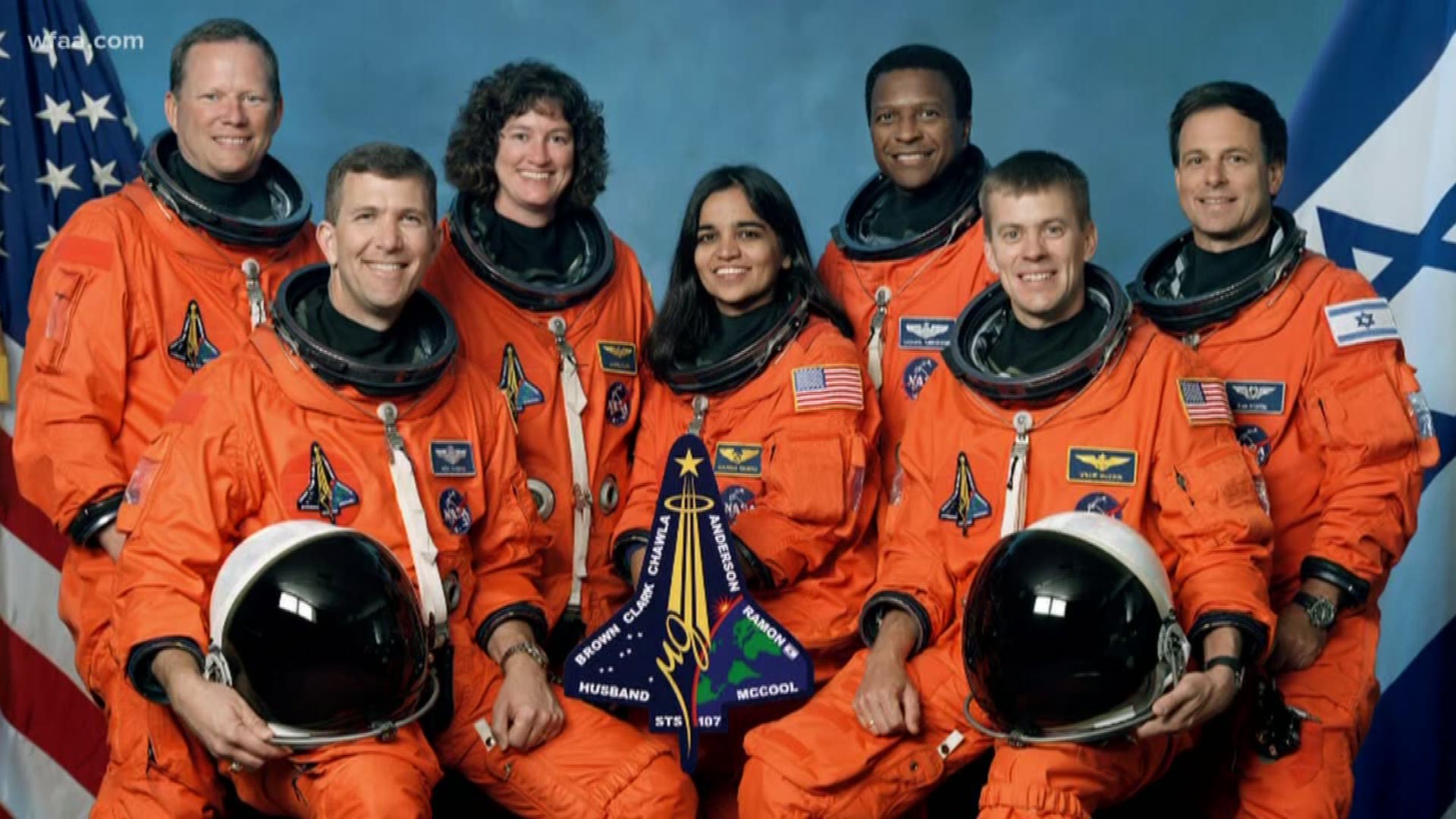Thursday marks fifteen years since Space Shuttle Columbia disintegrated over North Texas.
The tragedy played out live on WFAA-TV, the morning of February 1, 2003.
It was a 47-second live shot from Fair Park, picked up by television networks around the world – that confirmed to NASA that the orbiter came apart on re-entry, killing its seven astronauts.
This is the story behind the story -- how three journalists hoping to share something interesting with a local Saturday morning TV audience, witnessed history instead.
"We were always looking for something unique and different,” said John Gudjohnsen, a former assignment editor at WFAA. "We wanted to do things live, so you could get that immediacy."
It was his idea to shoot the shuttle re-entry that Saturday because he said he remembers seeing it before.
"He called me pretty early and just said 'Hey, I'd like to get this beauty shot.' I said 'Sure I'll do that,’” recalled John Pronk, a former WFAA reporter and photographer.
Pronk was behind the camera that morning.
"I didn't think there was any way that I was going to be able to A, find it and B, be steady and C, follow it,” Pronk recalled.
“If there had been, God forbid, some other spot news that had been going on, I probably would have sent John to do it,” said Gudjohnsen. “We were the only two people in the newsroom at that hour.”
“I just aimed my camera up and hoped that I would be able to see it,” Pronk explained. “Right before 8:00, it appeared in my viewfinder.”
“We took the shot and as it's going – something changed. Everybody knew something was not right,” said Gudjohnsen.
Pronk’s live shot lasted 47 seconds.
"Everybody was just trying to process what they had just seen,” said Pronk.
"[Former WFAA anchor] Brad [Watson] said we're going to try to figure this out, and we're going to go to commercial, and we'll be right back. And NASA Select said we lost audio communication with the shuttle and bang, we knew exactly what had happened,” added Gudjohnsen.
“You’ll notice here, it looks like you can see pieces of the shuttle coming off,” said Watson during live coverage on that morning 15 years ago.
Each sparkle, each contrail was Columbia coming apart.
A hole in the heat shield disintegrated the spacecraft – as it raced back to earth.
No one at the time yet understood the magnitude of what the station saw. And no one knew WFAA photographer Tim Hamilton was shooting a second angle of the shuttle, either.
"You know, this was just a quiet morning out in my front yard. I never thought it would come to this," said Hamilton.
NASA investigators, who later examined Hamilton’s video, were able to explain what he recorded.
"By the time I got my shot centered up, I believe the left wing was already gone and the first big puff that you see is the right wing leaving. They said it left and it spun before the crew cabin separated from the body."
Tim retired to Tennessee eight and a half years ago. There’s another part of his story, he used to share, as well.
After recording the shuttle’s disintegration, Hamilton said he called into the station from his home but couldn’t get through to anyone.
"We were getting calls from the BBC, and I just didn't have time. I knew he was off. I said 'Tim I just don't have time to talk right now. Bang,’” said Gudjohnsen.
“That's when he hung up on me, and that's when I went to the two-way,” added Hamilton. “Gudjohnsen didn't even respond to me he just said did you get it?”
WFAA was the only TV station to air it live that morning and capture two angles of it.
The Columbia Accident Investigation Board revealed that the live television coverage finally confirmed what NASA had feared; that Columbia came apart. Both WFAA videos were cited in the report, as well.
"I wish it had never happened. I wish I had never gotten a call to go out there,” said Pronk.
Three veteran journalists hoping to share something interesting captured history instead; that fateful flight forever connecting NASA and North Texas.

